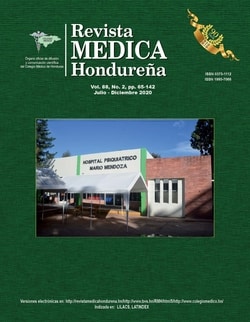Desigualdades sociales en salud: Mortalidad en menores de cinco años, Honduras, 2014
DOI:
https://doi.org/10.5377/rmh.v88i2.11487Palabras clave:
Desigualdades en salud, Mortalidad, índice de Concentración de desigualdadResumen
Antecedentes: Las desigualdades sociales en salud se refieren a disparidades de salud, que se consideran injustas, evitables e innecesarias y que sistemáticamente recaen sobre poblaciones vulnerables. Objetivo: Medir las desigualdades sociales en salud de la mortalidad en los niños menores de cinco años, Francisco Morazán y Yoro, Honduras, año 2014. Métodos: Estudio descriptivo transversal. Se analizó la mortalidad de menores de 5 años a través de la medición de desigualdades sociales; se estimó las métricas de desigualdad en salud, índice de Kuznets relativo y absoluto, índice de desigualdad de la pendiente, índice de concentración en salud; se describió la situación de las desigualdades sociales en salud de la mortalidad por estratificador de equidad social (alfabetismo). Resultados: En 27 municipios del departamento de Francisco Morazán se registraron 71 menores de cinco años fallecidos, y en los 11 municipios del departamento de Yoro 131. Se encontró un exceso de 18 muertes de menores de cinco años por 1000 nacidos vivos entre la población con menor alfabetismo en Francisco Morazán, y de 23 en Yoro, en comparación con los municipios de mayor alfabetismo. En ambos departamentos la curva de concentración de la salud se mantuvo sobre la línea de equidad, concluyendo que la mortalidad de menores de cinco años se concentró en la población menos alfabetizada. Discusión: Se observó que los municipios con tasas más altas de alfabetismo presentaron menos mortalidad de menores de cinco años
Descargas
387




